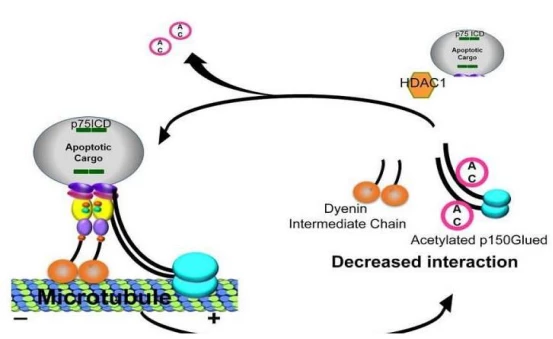The study found that special enzymes are used as new targets to develop and treat a variety of neurodegenerative disease

The study found that special enzymes are used as new targets to develop and treat a variety of neurodegenerative diseases.

Copyright © iCell Bioscience Inc, Shanghai 2018-2019
Recently, a research report published in the International Journal of Developmental Cell, scientists from Vanderbilt University discovered a special enzyme in the study of neurons in the body of patients with multiple sclerosis, which may help researchers develop new treatments for a variety of neurodegenerative diseases as a new target.

The researchers found that enzymes called histone deacetylase 1 (HDAC1), which normally exist in the nucleus, are also present in the axons of certain neurons. When the denaturing signal is activated, HDAC1 can be modified. The component, called "molecular motor," then conducts the signaling substance through the axons to the cell body of the neuron and kills it.
Because some neurons have long axons, this molecular motor is only part of the process; if the cell body of some neurons is as large as a basketball, then the axon may reach 6 meters long. The person clarified how the molecular motor was assembled and how it was transported to the cell body. Previous researchers have discovered a retrograde degeneration signal, and the researchers identified key components and mechanisms to control their transport.
Researchers have built a microfluidic device to separate axons from neuronal cell bodies, which can help determine which part of the denaturing signal is occurring; researchers have long been calling the neurotrophic factor p75 ( NTR's signaling factors are being studied, and researchers want to know its key role in brain development and disease development, and how it induces a variety of neurodegenerative diseases, such as Alzheimer's disease, amyotrophic lateral cord Sclerosis, traumatic brain injury and other diseases.
Finally, the researchers said that later, they would like to clarify whether similar cellular processes will occur in the motor neurons of the brain of amyotrophic lateral sclerosis patients. If the process can be effectively blocked, researchers may be able to achieve successful resistance. The purpose of cell death in broken neurons.
 Loading ....
Loading ....
